There is so much to think about when planning your Vietnam travels so our handy Vietnam Trip Planner will guide you on what you need for an enjoyable stay in Vietnam.
From the initial idea of visiting Vietnam, to creating an itinerary and booking everything the process can be daunting if you don’t know where to start.
We have lived in and visited Vietnam many times and gained expert knowledge of travelling throughout Vietnam and can guide you through the process of planning your trip. Our Vietnam trip planning infographic below has the 10 steps we will be covering in detail which will help you create the best possible Vietnam travel itinerary.
- 10 step guide to Vietnam trip planning
- 1 – Deciding when to visit Vietnam
- 2 – What budget do I need for a Vietnam trip
- 3 – Decide where you want to visit
- 4 – Visa and entry requirements for your Vietnam trip
- 5 – Vaccinations and medical requirements
- 6 – Book flights and Travel Insurance
- 7 – Booking Accommodation for Vietnam
- 8 – Booking Transport in Vietnam
- 9 – Vietnam tours Attractions and Experiences
- 10 – Getting ready for your Vietnam trip
10 step guide to Vietnam trip planning
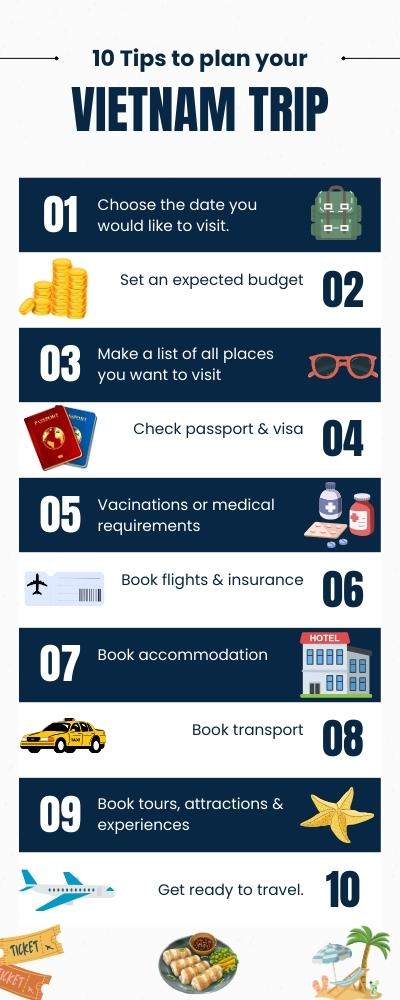
1 – Deciding when to visit Vietnam
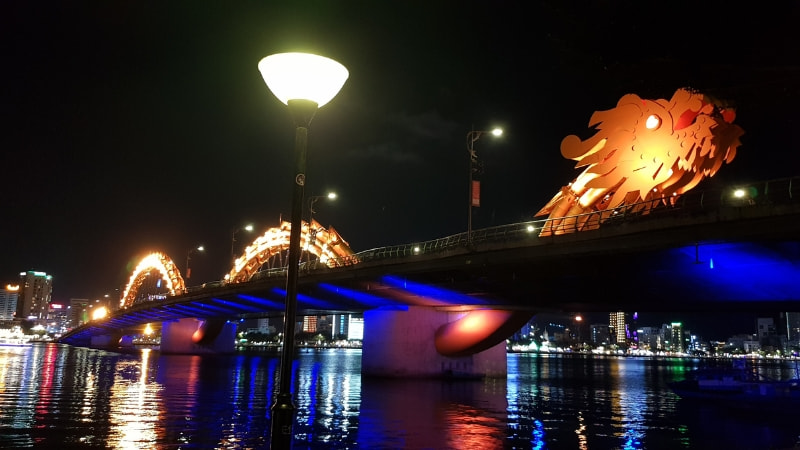
Choosing when to visit will of course depend largely on the time of year you are available and although it is wonderful to visit any time there are certain times of the year where the weather is at its best in the different regions of the country.
The regions of Vietnam are split into Northern, Central and Southern.
Northern Vietnam major tourist destinations include Hanoi, Ha Long Bay, Sapa and to a lesser degree Ninh Binh.
Central Vietnam major tourist destinations include Hue, Da Nang, Nha Trang and Dalat.
Southern Vietnam major tourist destinations include Ho Chi Minh City, Can Tho on the Mekong Delta and the island of Pho Quoc.
Vietnam is a large geographically diverse country with changing landscapes and the Northern region has 4 seasons of Spring, Summer, Autumn, and Winter while the Central and Southern regions have mainly dry and rainy seasons. The best time to visit can be summarised as follows.
| Region | Best time to visit |
|---|---|
| Northern | January, February, March, April, October, November, December |
| Central | February, March, April, May |
| Southern | December, January, February, March, April |
For more information on the best time to visit and so much more, our community Facebook Group Step Into Vietnam is a great place to ask Vietnam trip related travel questions. It’s a free group that is updated regularly with the latest Vietnam travel news and you are welcome to join.
2 – What budget do I need for a Vietnam trip
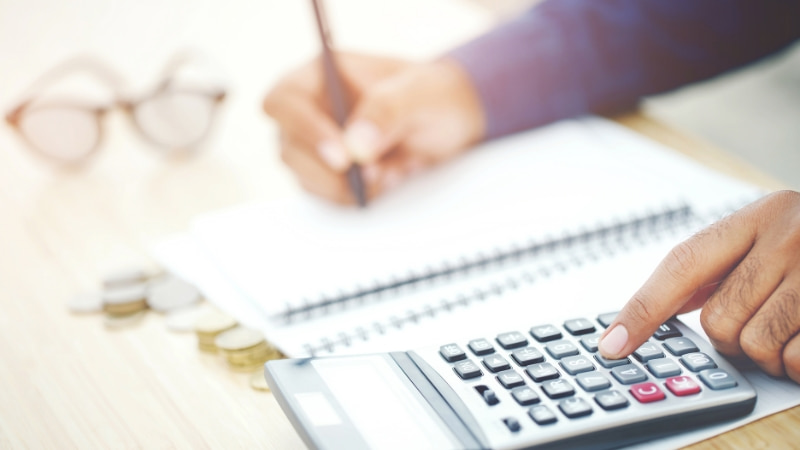
Fortunately travelling Vietnam can be relatively inexpensive compared to many other destinations. How much your trip will cost will depend on your level of comfort, experiences you want to include and length of time.
With accommodation starting from as low as $25 per night for modest homestays and small hotels and street food available for $1 to $2 per meal it is possible to travel for very cheap.
However, not everyone wants to travel on a shoestring budget and if you enjoy a little luxury you will need to factor in what you consider a reasonable amount. High quality resort style accommodation at major hotel chains will cost more but in general you will find 4 and 5 star accommodation will be less than you would normally pay in most western countries.
Many 4 star hotels can be found for under $100 per night. Stepping up to 5 stars will generally cost more than $100 but again usually less than similar accommodation in many other countries.
When budgeting for food it is worth noting that most Vietnamese often eat out so food establishments are plentiful throughout the country, and you will be spoilt for choices.
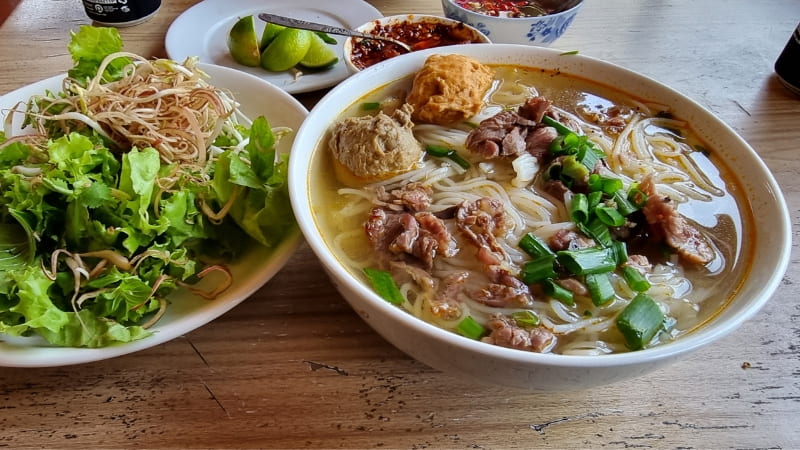
Prices vary depending on the style, location, and cuisine with Vietnamese dishes costing just a few dollars. Restaurants that cater mainly to tourists will normally be more expensive especially if the food is imported.
As the Vietnamese cuisine is so delicious, we tend to eat at mainly local restaurants where meals are available for just a few dollars each.
Nightlife is a major attraction for many visitors and popular bars and clubs offer happy hours or promotions with drinks at reduced prices during certain times.
As for a set amount once you in Vietnam, our advice is to take what you are comfortable with as you can adjust your expenditure during your stay. The local currency is Vietnamese Dong and money changes and ATMs are readily available.
3 – Decide where you want to visit
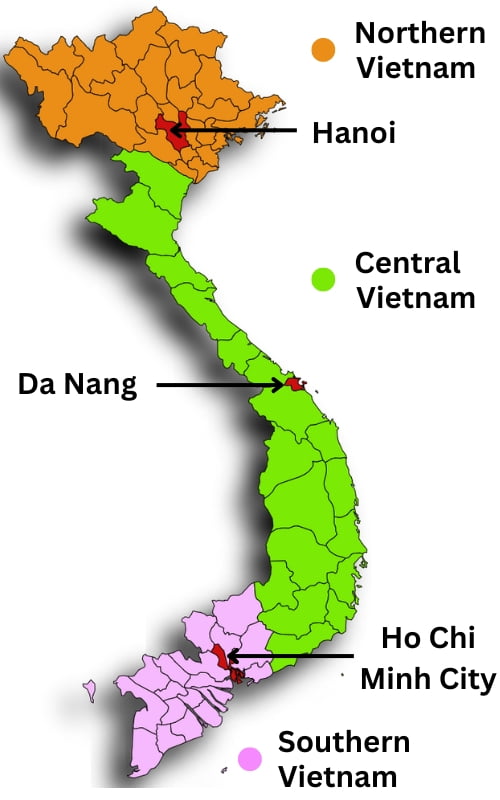
Vietnam is a large country with many interesting sights. When you have chosen when to visit and set your budget the next step is to decide where you want to visit.
We have a dedicated Vietnam Travel Facebook Group which is full of useful information, and members that are always eager to help, so, feel free to join our group Step Into Vietnam.
The airport you will initially fly into from your home country will influence your Vietnam trip together with your intended length of stay.
A great place to start researching is to check our region and city guides.
If you are arriving in Hanoi, check our guides of Northern Vietnam
For Da Nang and Nha Trang check our guides of Central Vietnam
For Ho Chi Minh City check our guides of Southern Vietnam
If you prefer guided package tours our partners over at Tourradar have many tours of Vietnam to choose from.
Click here to see the latest package tours for Vietnam.
4 – Visa and entry requirements for your Vietnam trip

Normally you need to ensure your passport has at least six months validity remaining from the time you enter Vietnam. Depending on your nationality you may also be required to obtain a visa, and our go to visa agents for all our international travel is iVisa. They are experts in all visas and are available 24/7 to assist with all visa applications.
A quick Google search will unfortunately display many fake or unscrupulous Vietnam visa sites, so our advice is to always use reputable companies such as iVisa.
Check here to find out more about iVisa services and how they can help you.
5 – Vaccinations and medical requirements

Depending on where you live the weather may be vastly different to what you normally experience. Vietnam has a tropical and temperate climate. With monsoon weather systems in the north, central and southern regions at different times of the year resulting in heavy rainfall.
This can result in Mosquitos borne diseases that could potentially cause illness, therefore preventive measures may need to be considered. so it is wise to talk to your medical practitioner who can advise of any medications or vaccinations required.
6 – Book flights and Travel Insurance

Now that you have decided when you will be visiting Vietnam and chosen the areas you want to visit it is now time to consider how you will get to Vietnam. It is likely that you will be flying into Vietnam and the main international airports are:
Northern Vietnam
Hanoi Airport (HAN)
Hanoi airport is approximately a 40 minute drive to Hanoi city centre. This would also be the airport you would choose when planning to visit Ha Long Bay which is approximately 3 to 5 hrs from Hanoi or Sapa which is approximately 4 to 5 hrs from Hanoi.
Central Vietnam
Da Nang (DAD)
Da Nang airport is approximately a 15 minute drive to Da Nang city centre and around 45 minutes to Hoi An
Nha Trang (CXR)
Nha Trang airport is approximately a 45 minute drive to Nha Trang centre.
Southern Vietnam
Ho Chi Minh City Airport (SGN)
Ho Chi Minh City Airport is approximately a 20 minute drive to the city centre.
There are other international airports, but these are the main ones most international airlines fly into from Australia, USA, UK, and Europe.
A good place to search for flights to Vietnam include Skyscanner and Kiwi. Start by searching both sites to find the best flights to suit your budget.
It always pays to compare prices and routes so other airline booking sites worth checking include trip.com and CheapOair. We have found some good deals on these sites in the past.
Travel Insurance
Although we all plan to have a safe time abroad the unexpected can happen to anyone. Hopefully nothing will go wrong however for peace of mind it’s comforting to know that if something were to happen you are covered. We have all seen far too many reports of unsuspecting travellers stranded in foreign countries that didn’t take out insurance.
It’s a personal choice of course but we highly recommend you get coverage for your Vietnam trip. Ideally the policy should be purchased as soon as possible after buying flight tickets to ensure you are also covered for airline cancellations or changes that could potentially disrupt your other bookings.
It is also worth noting that not all policies are equal, so it pays to check what exactly it covers. For instance if you plan to hire a motorbike in Vietnam ensure your policy includes that activity as not all policies have that included.
For travellers form the USA VisitorsCoverage and for Australian-based travellers Cover-More are companies which both offer travel insurance policies.
7 – Booking Accommodation for Vietnam
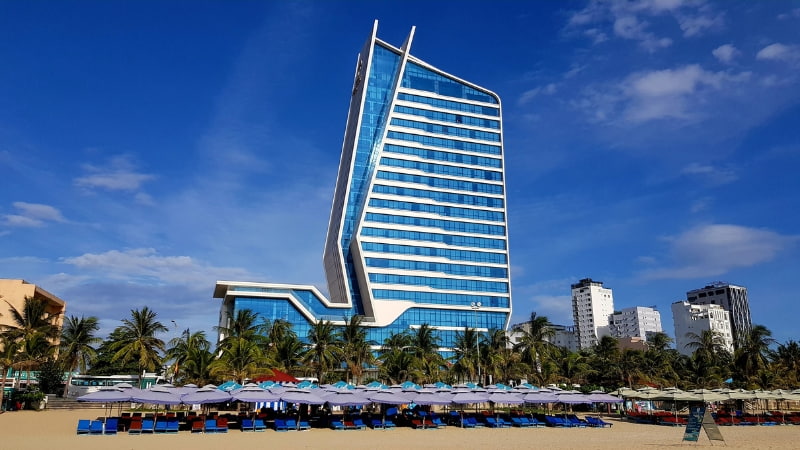
Vietnam has a huge range of accommodation options including homestays, boutique hotels, hostels, resorts, Airbnb and Vrbo.
The main site we use to book our accommodation is booking.com and Agoda. Both of which have a large selection of properties across Vietnam with free cancellation offered on many properties.
We also have comprehensive accommodation guides the following popular destinations:
8 – Booking Transport in Vietnam
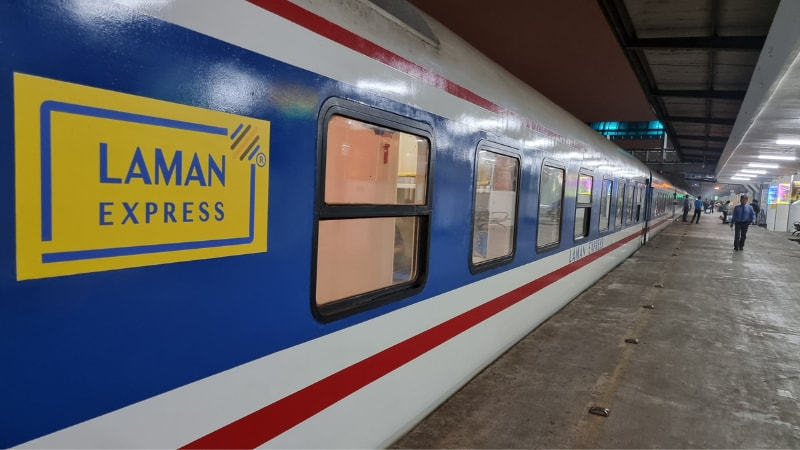
Internal transport options between destinations include flights, buses, and trains. Flying is the quickest and often the cheapest for long distances.
Check Skyscanner for pricing of internal Vietnam flights.
Train travel is also available between North and South Vietnam and If you have the time this can be a great opportunity to take in the scenic everchanging landscapes. Different configurations are available from seats to sleeper cabins.
It is worth noting however that 2 berth cabins sell out quickly as we discovered when booking our Hanoi to Hue train journey. Even two months out the 2 berth cabins were fully booked so our advice when booking train travel is to book early as possible.
Our preferred Vietnam train booking site is 12Go and we have used this site many times.
Bus travel is also a popular budget friendly option, and many services are available throughout the country. Although you will sometimes find normal uprights seating buses such as one, we took from Hanoi to Sa Pa the majority are sleeper buses and these may not suit everyone, as space can be limited especially for taller travellers, and some are not very comfortable. You will also be required to remove shoes on sleeper buses.
We have travelled on sleeper buses in Vietnam with good and bad experiences. Unfortunately It’s not possible to know beforehand what type of sleeper bus will be in service for the chosen route so we tend to avoid buses on long journeys.
For smaller distances of a few hours’ commuter buses are often used and some of these can be quite luxurious.
To book buses we use and recommend 12go.
9 – Vietnam tours Attractions and Experiences
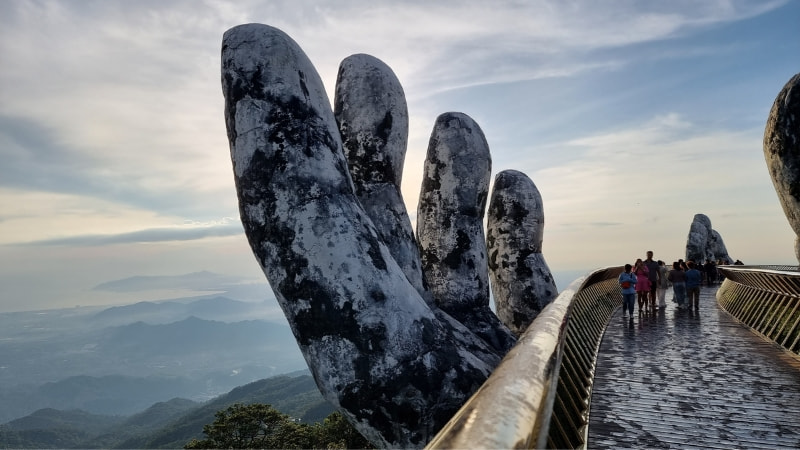
It is wise to pre plan what attractions and experiences you would like to visit as these may sell out especially during peak visitor times. If your plans include Ha Long Bay many of the best cruises sell out quickly so booking early is advisable. Check our article on Ha Long Bay tours for recommendation on choosing the best tour.
Vietnam is full of notable sights and no matter where you are visiting you are sure to find many attractions and experiences from traditional Vietnamese cooking classes to hiking the mountains or visiting the many islands.
To book tours and experiences our two favourite sites are Viator and Get Your Guide. Both sites have a wealth of day tours and many offer free cancellation of their tours up to 24 hours before the tour departure.
For those wanting to book a package Vietnam tour our partners over at Tourradar have multiple all-inclusive tours.
10 – Getting ready for your Vietnam trip
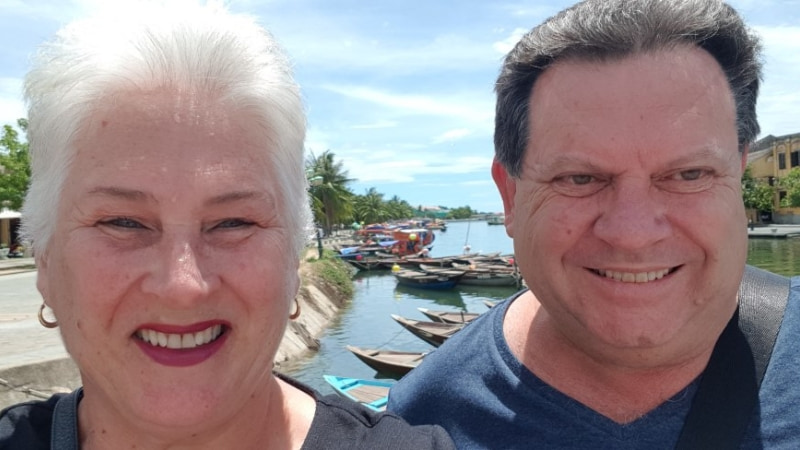
Now that you have finalised your itinerary and pre booked accommodation, tours, and experiences the final step is to make sure you are prepared for when you arrive.
Consider if you will be taking cash or cards. Cash is the preferred method in Vietnam so you will need access to the local currency Vietnamese Dong. Our advice is to take some cash and exchange it when you arrive at either the airport money changes or in the city you first arrive at. Money change shops are easy to find and usually offer better value than exchanges at the airport.
Withdrawing money from an ATM in Vietnam can be expensive with non-favourable exchange rates and fees often added. To avoid this we now use a Wise card when abroad which allows us to withdraw cash in local currencies without paying the expensive fees. If you would like to know more about Wise check here. The card is free and can be loaded with worldwide currencies. It also works well for international for money transfers.
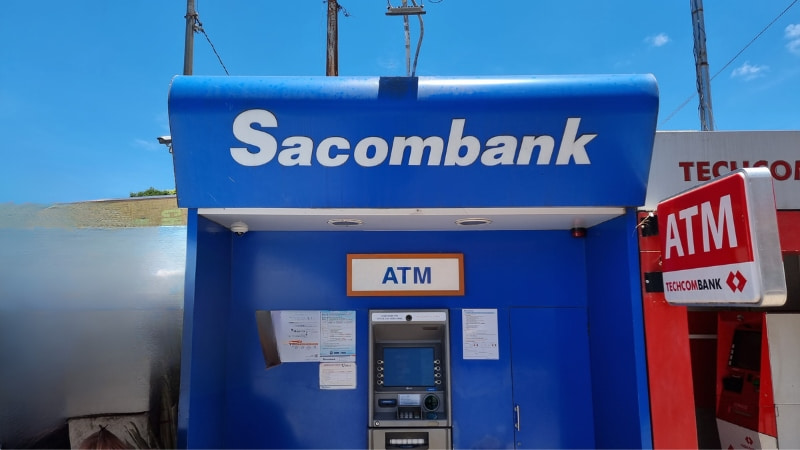
If you plan to take a taxi from the airport to your hotel, be aware that cash is the safest option as not all taxi drivers will take cards. Also be aware that taxi scams are common at the main airports, and you could be significantly overcharged if the driver does not use the meter. Always ask for the meter to be turned on and if the driver refuses exit the taxi. In Vietnam it is the law for taxi drivers to use the meter but unfortunately many don’t unless requested to do so.
For peace of mind you can also pre book hotel transfers. This is the easiest option and removes having to deal with taxi drivers when you are tired from a long flight.
Check here for hotel transfers from Hanoi Airport.
Or
Check here for hotel transfers from Ho Chi Minh City Airport.
For Internet access when arriving at a new country we now purchase an eSim for our phones which is so much easier to set up than physical Sim cards. If you are not familiar with an eSim check this guide which explains the benefits and how they work.
When you are ready to purchase an eSim check here for pricing.
Some helpful apps you can download prior to arrival include the following:
Grap is a handy rideshare app used in many Asian countries including Vietnam. It is the equivalent of Uber and very easy to set up and use. Often it is much cheaper than Taxi.
Xe Currency Converter for up to date currency exchange rates.
Google Maps and Google translate are also worthwhile. Finally, feel free to pop over to our Step Into Vietnam Facebook community for inspiration and helpful advice to get the most out of your Vietnam travels.
